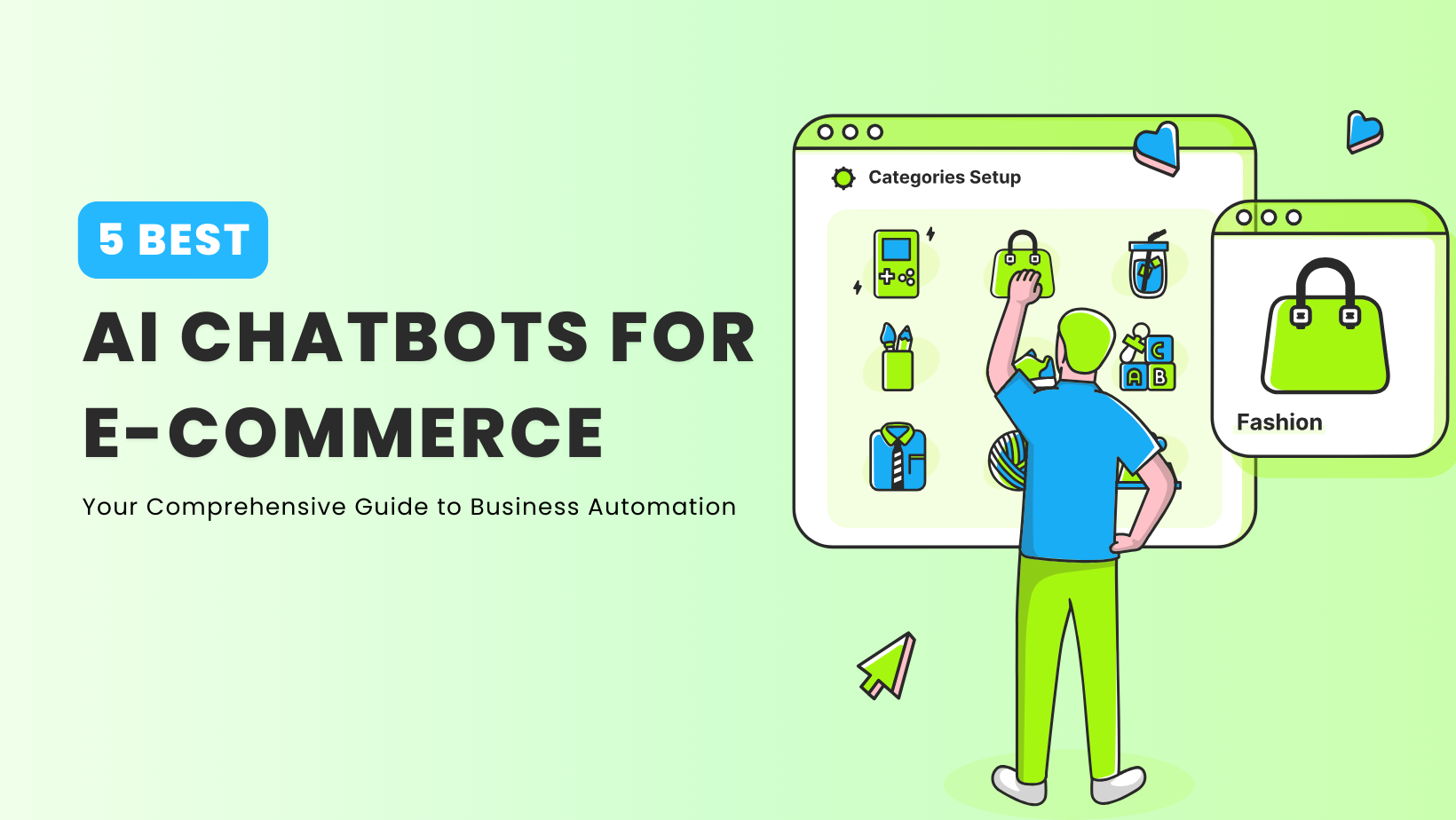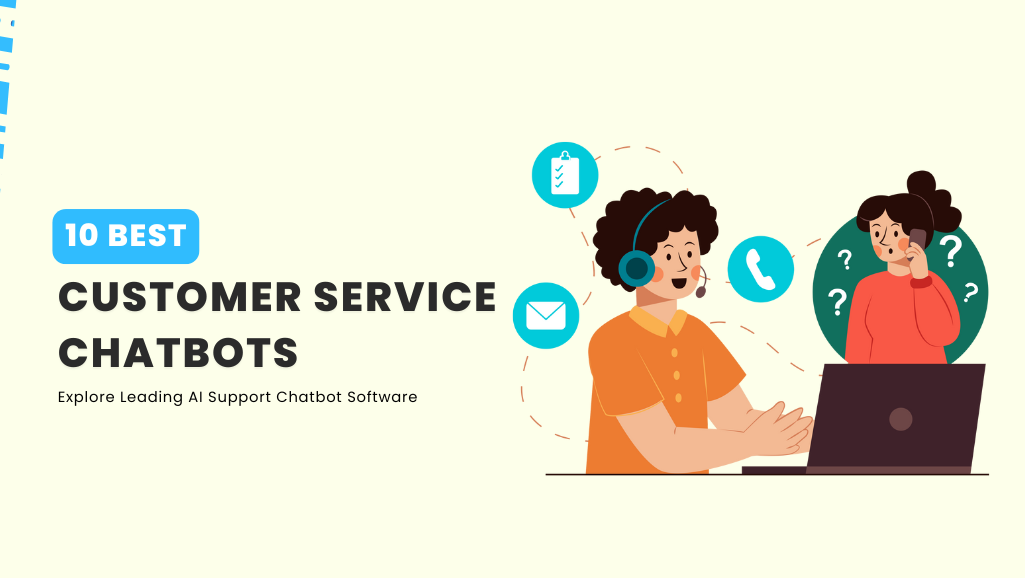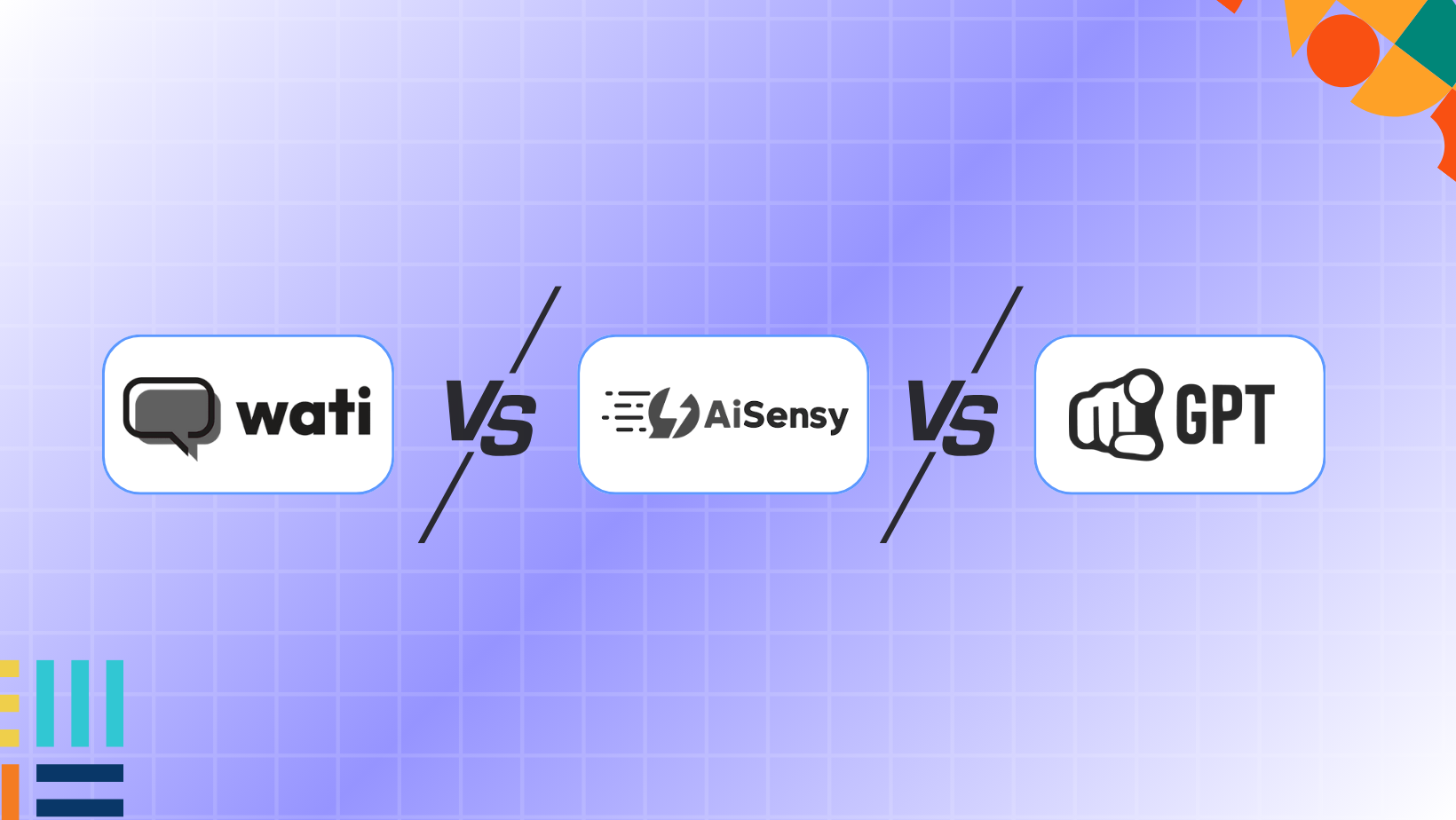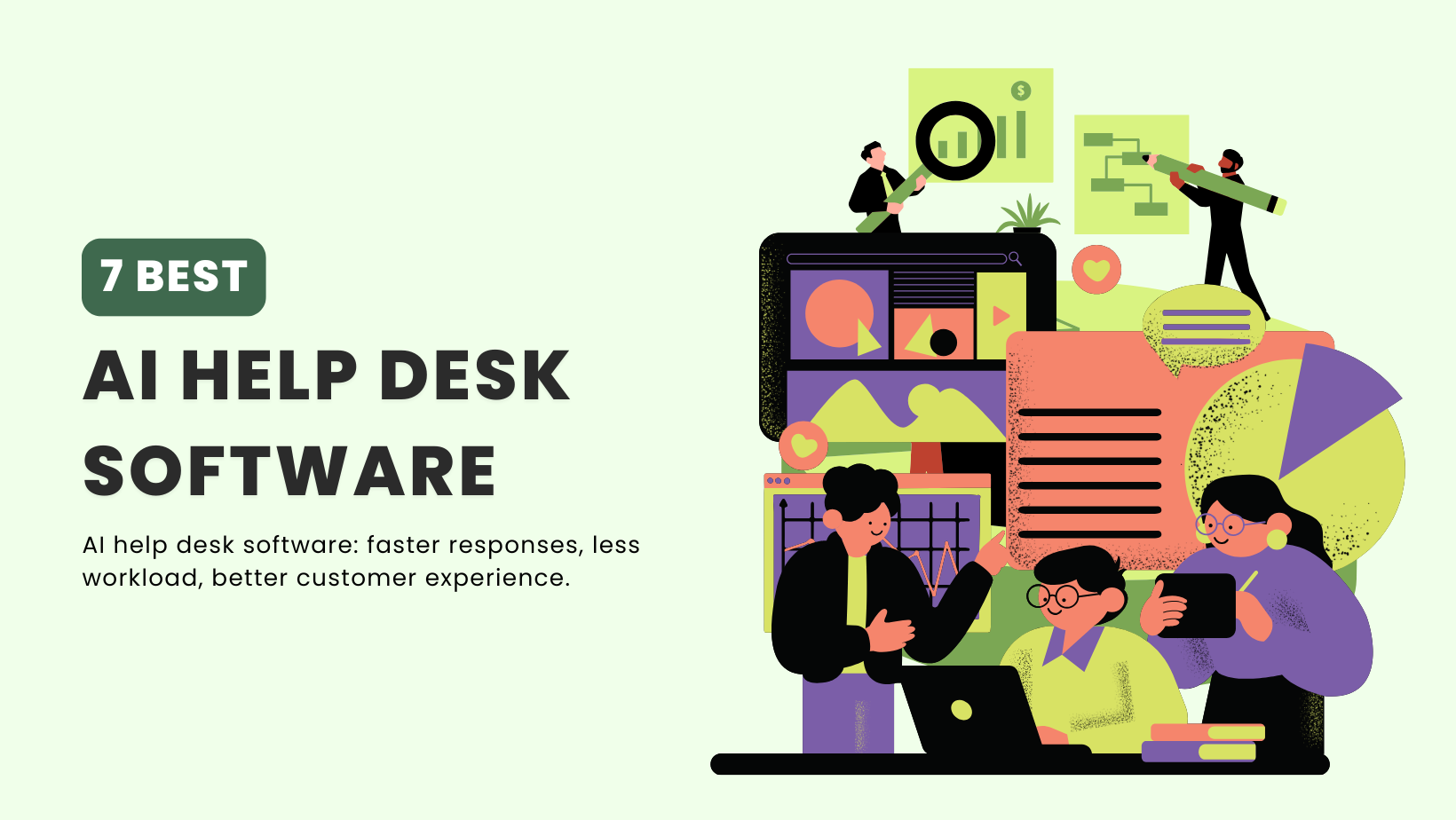5 Best AI Chatbots for E-commerce Websites


AI chatbots are now became essential tools for e-commerce brands aiming to increase sales, reduce workload, and offer faster support.
80% of customer service organizations will use generative AI in some form by 2025. E-commerce is leading that shift—using chatbots to answer common queries, assist with purchases, and even recover abandoned carts.
During the 2024 holiday season, AI-powered chatbots helped drive a 4% rise in online sales, reaching $282 billion in the U.S
These numbers aren’t surprising when you consider how modern chatbots handle everything from product recommendations to delivery updates—24/7, without delay.
In this blog, we’ll cover:

E-commerce chatbot is an AI tool that handles customer queries on online shopping platforms. It works through websites, apps, and messaging services like WhatsApp and Instagram to understand and respond to customers in real-time.
These chatbots help with various shopping tasks – answering product queries, suggesting items based on customer preferences, providing order updates, handling return requests, and processing payments within the chat itself.
Modern chatbots connect directly with your business systems – they check your inventory database for product availability, use customer information from your CRM to personalize interactions, and link with payment gateways for smooth transactions.
The main benefit is practical – customers get immediate assistance whenever they shop (even late night), while your business saves on support costs and increases sales by converting more visitors into customers.
AI chatbots have become a key part of how e-commerce businesses run in 2025. They do much more than reply to customer queries—they help drive sales, save time, and keep the experience smooth for everyone involved. Here’s how they add real value to your online store:
Customers expect quick answers. AI chatbots instantly respond to common questions—like tracking orders, handling returns, or resolving payment issues. And if things get tricky, the chatbot smoothly connects your customer with a human representative.
Not every visitor is ready to buy immediately. Chatbots engage shoppers in conversation, collecting details like their interests and contact info. This information can instantly go into your CRM, helping your sales team quickly identify and act on the best opportunities.
Instead of just showing standard products, AI chatbots suggest items based on what each customer browses or buys. This personalized touch helps shoppers find what they’re looking for faster and encourages more sales.
Chatbots aren’t shy about selling. They can suggest add-ons or better alternatives right when the customer is making their choice, or follow up if a customer leaves items in their cart. These targeted recommendations help drive higher average order values.
Manual tasks slow your team down. AI chatbots handle repetitive activities automatically—processing returns, cancellations, scheduling appointments, or sending delivery confirmations—freeing your staff for tasks that really matter.
Customers prefer simple searches over complicated filters. Chatbots understand everyday language like “Show me black running shoes under $50,” helping shoppers quickly find exactly what they want, especially on mobile.
The best AI chatbots in e-commerce aren’t just smart—they’re practical. Here’s a breakdown of the core capabilities that make them valuable in real business use:
Connect with shoppers wherever they are—your website, mobile app, WhatsApp, Instagram, Facebook Messenger, and more. The chatbot should carry conversations across platforms without losing context.
Understand customer intent across multiple messages. Whether a user asks about shipping, returns, or products in separate messages, the chatbot should keep track and respond accordingly.
Let customers check order status, initiate returns, or ask about delivery—all from the chat window. A good chatbot connects directly to your order system to give instant, accurate answers.
Serve a global customer base by responding in multiple languages. Language detection, auto-translation, and local currency display help reduce friction and improve conversions.
Some customers prefer speaking over typing. Voice chatbots allow for real-time spoken interactions—ideal for mobile shoppers or accessibility needs.
When the chatbot reaches its limit, it should pass the conversation to a live support agent. All chat history, user data, and context must carry over for a smooth handoff.
Connect your chatbot to tools you already use—Shopify, WooCommerce, Salesforce, or HubSpot. This allows the bot to access order data, customer profiles, and update your CRM automatically.
Go beyond text. Send product carousels, images, videos, or payment buttons directly in chat to drive engagement and speed up decisions.
1. YourGPT: A no-code AI chatbot builder with multilingual support, API integrations, and custom workflows for sales, support, and automation.
2. Tidio: Live chat and chatbot hybrid with AI responses, email automation, and NLP features for e-commerce customer service.
3. BotStar: Drag-and-drop chatbot platform with CRM integration and multi-language support for fast deployment without coding.
4. Chatfuel: Simple platform for building AI bots on Messenger, WhatsApp, and Instagram, ideal for automating support and lead capture.
5. Octane AI: Shopify-focused chatbot platform offering quizzes and product recommendations to personalize the buying experience.
These 6 AI chatbots are built to help e-commerce stores increase sales, reduce support load, and deliver faster, personalized customer experiences.

YourGPT is a no-code AI chatbot platform that help e-commerce businesses automate customer support, boost conversions, and reduce operational load. Designed for fast setup and real-time performance, it enables online stores to handle product inquiries, track orders, recover abandoned carts, and assist buyers—across websites and messaging platforms.
It works well with platforms like WooCommerce, Webflow, and BigCommerce, and is made to set up quickly so you can start helping customers without delay.

Tidio is a customer service platform that helps e-commerce businesses automate support, manage customer interactions, and handle sales conversations. It combines live chat, chatbots, and automation tools to keep communication consistent across channels.

BotStar is a no-code chatbot platform for e-commerce. It helps handle product questions, take orders, support customers, and manage live chat.
It runs on websites and messaging apps, and connects with Shopify, Stripe, HubSpot, and Salesforce. You can set it up using a visual builder and manage content directly—no coding needed.

Chatfuel is a no-code chatbot platform focused on automating sales, marketing, and support—primarily through WhatsApp, Instagram, and Facebook Messenger. It’s designed for e-commerce businesses looking to engage customers, recover carts, and handle post-purchase communication directly in chat.

Octane AI is a Shopify-focused platform that helps online stores build product recommendation quizzes and collect zero-party data to personalize marketing across email and SMS.
Launching a chatbot is just the start. If you want it to deliver real results—more sales, fewer support tickets, higher retention—you need to go beyond setup. These tips will help you turn your chatbot into a real asset across the buying journey.
1. Focus on use cases that directly impact revenue or cost
Not every chatbot feature gives equal value. Start with workflows that move the needle:
These are the conversations that drive decisions. Prioritising them gets you faster results.
2. Train the chatbot with your real customer data
Forget pre-filled templates. Train your chatbot using your actual conversations and store data:
The more your chatbot understands your actual business, the fewer “Sorry, I didn’t get that” moments you’ll have.
3. Put the chatbot in places that matter
Where the chatbot appears affects how useful it is. Don’t just keep it on the homepage. Instead deploy custom AI agents to website pages where users may need them most:
Well-placed chatbots catch users when they’re most likely to convert or need help.
4. Trigger conversations based on real-time behavior
Don’t make your chatbot interrupt for no reason. Set it to respond to user intent:
Behavioral triggers make conversations feel timely and useful—not annoying or random.
5. Make human escalation obvious and easy
If a user wants to talk to a human, don’t make them fight the chatbot to get there:
This reduces drop-offs and makes your support look reliable, not robotic.
6. Track performance using business-relevant KPIs
You don’t need 100 metrics—just the right ones:
These tell you what’s working and where the chatbot needs fixing or retraining.
7. Collect feedback directly from users
Don’t wait for complaints. After every conversation, ask something simple:
Short feedback loops help you fix gaps quickly, improve your flows, and avoid repeating the same mistakes.
8. Make it personal
Use whatever context you have to personalise the interaction:
The closer it feels to a human conversation, the better your conversion and satisfaction rates will be.
Top use cases include order tracking, product recommendations, cart recovery, handling returns, capturing leads, and providing 24/7 instant support to customers.
Train your chatbot using your product catalog, real customer conversations, FAQs, return policies, and order data. Feeding real business data improves chatbot accuracy and relevance.
Yes. No-code platforms like YourGPT or BotStar let you build and deploy chatbots using drag-and-drop builders and visual workflows, with no programming knowledge needed.
Avoid using generic responses, skipping training on actual customer data, neglecting integration with your CRM or e-commerce platform, and hiding escalation options to human agents.
Yes. Modern chatbots can ask qualifying questions, collect user info, and automatically push it to your CRM or email automation tools like HubSpot or Zapier.
Absolutely. With auto-language detection and built-in translation, AI chatbots can chat in 100+ languages and even display local currencies to serve global shoppers effectively.
Nowadays, AI chatbots are a practical part of e-commerce operations. They cut down support workload, help recover lost sales, and improve how customers interact with online stores.
Platforms like YourGPT, tidio and Octane AI are built for this purpose—handling tasks like cart recovery, product questions, and order support. They work with Shopify, WooCommerce, and other systems, and can be set up quickly.
To get real results, focus on clear use cases, train the bot with actual business data, and track its performance. A well-set-up chatbot doesn’t just answer questions—it helps drive sales and reduce manual work.

A customer sends an urgent question while your support team is offline. The delayed reply leads to frustration, and a small issue becomes a poor experience. This happens daily for businesses that cannot offer consistent, real-time support. AI chatbots help solve this. They respond instantly, understand context, guide customers through solutions, and transfer complex issues […]


LiveChat is a customer messaging platform that has helped many teams handle customer questions through basic chat widgets, but the way businesses support customers has changed. People now expect quick answers across more channels, and support teams want tools that cut down on repetitive work instead of adding to it. As a result, many companies […]


TL;DR Wati manages WhatsApp teams and shared inbox. AiSensy runs broadcast campaigns and drip sequences. YourGPT trains on your business data and executes real-time actions across multiple channels. WhatsApp and Instagram DMs now handle the majority of customer conversations for growing brands in 2025. What starts as 20-30 messages per day quickly scales to hundreds […]


TL;DR AI help desk software reduces repetitive tickets by turning your knowledge base into instant answers. The market is growing fast as teams shift from adding agents to improving self-service and automation. This guide reviews seven platforms based on real performance so you can choose a tool that improves response quality and team efficiency. AI […]


Forethought is an AI-powered support automation platform designed to build intelligent agents for ticket deflection and intent-based workflows, primarily targeting mid-market and enterprise support teams managing high volumes of tickets. This blog reviews ten Forethought options in 2025 that offer clearer pricing, faster deployment, and better customization. The selection ranges from no-code builders for small […]


YourGPT and Botpress are both AI agent platforms, but they take different approaches to automation and customer engagement. Businesses don’t need another chatbot. They need AI agents that connect to their existing systems, handle real tasks, and work across multiple channels without breaking down when customers ask something unexpected. This guide compares how YourGPT and […]
